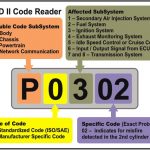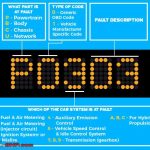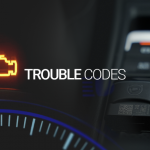
Whether you’re planning on repairing your coach yourself or hiring a mechanic to do the job for you, it’s essential to know about GM fault codes. In this article we’ll cover the P0xxx code which is related to fuel or air metering problems, the P0122 and P0131 codes, which are related to problems with the O2 heater switch, and the Bxxxx and Cxxxx codes which are not related to the powertrain.
P0xxx codes are for fuel or air metering problems
The first two letters of the P0xxx code are generic, meaning they are common to many vehicles. The third character is the system they’re associated with. Numbers one and two relate to fuel or air metering problems, while numbers three and four are engine misfires and computer or output circuit faults. Numbers seven and eight are failures associated with non-powertrain systems and do not illuminate the check engine light.
When the check engine light is on, it means there’s a problem with the powertrain. Fuel and air metering systems are a common source of P0xx codes, but they can be caused by anything. Fuel and air metering problems are the most common cause, but air metering and emissions systems can also cause P0xx codes. If you’re experiencing code P0219, you may have a malfunctioning engine, such as a faulty spark plug wire or crankshaft position sensor.
P0122 and P0131 are for O2 heater switch problems
Diagnostic trouble codes (DTC) P0122 and P0131 are related to the oxygen sensor circuit. These codes indicate that the oxygen sensor is not delivering the required voltage to the PCM or ECM. This sensor is located on the engine’s left side, before the catalytic converter. The sensor detects the amount of oxygen in the air. When the voltage is too low, the air-fuel ratio is too lean. The problem is usually a shorted circuit.
A faulty O2 sensor can also cause P0138 to occur. A shorted lead to the downstream O2 sensor would short the sensor’s power feed and the O2 signal lead. If you can trace this problem to the sensor, it means that it’s the O2 heater. Shorting the lead would damage the sensor and the engine. However, it’s unlikely that you’re in danger of damaging your car.
The best way to know the problem is to visit a trusted mechanic. Diagnostic fees for the P0131 code typically range from $75 to $150. Many repair shops will apply these diagnostic fees toward the repairs they’re able to complete. If the diagnosis turns out to be a simple problem, the repair should only take a few minutes. You can also research the problem yourself by asking a trusted mechanic or diagnostic center to diagnose it.
If your car has a P0122 or P0131 trouble code, the oxygen sensor circuit is probably at fault. In this case, the oxygen sensor circuit’s voltage may be abnormal or not even working. Replace the sensor if the problem is in the sensor. Often, a faulty oxygen sensor will result in the Check Engine Light to illuminate, putting the vehicle in failsafe mode. This lean condition can cause poor fuel economy. Additionally, your vehicle may run poorly or even stutter while driving.
The reason for the P0122 and P0131 codes is that the oxygen sensor is in an unprogrammed state. The oxygen sensor produces a voltage of zero or one volt. An abnormal voltage can occur when the oxygen sensor stays in a rich biased mode for too long. If the voltage is over one volt, the sensor will not read accurately. You should always check the air fuel sensor wiring to ensure it’s working properly.
Bxxxx codes are for non-powertrain problems
Trouble codes are grouped by system and begin with the letter B, C, P, or U. The first character of trouble codes must be the same across all makes and models. In some cases, Bxxxx codes are not related to powertrain problems. The code may simply indicate a problem with the transmission. The rest of the codes are for non-powertrain issues. Regardless of the code, you should visit your mechanic immediately.
Cxxxx codes are for non-powertrain problems
Trouble codes are a vehicle’s way of communicating malfunctions. They can be generated by the OBD II diagnostic link connector. Trouble codes start with the letter B and go from there, with the exception of generic codes, which begin with “0.” These codes are used across all models and makes, and have the same definition. When your car’s computer sends you a code for non-powertrain problems, it may indicate a transmission fault or other non-powertrain failure.
The Cxxxx code can also appear if your car’s parking brake light is on, or if the ABS or anti-lock braking system is malfunctioning. To determine what is causing the malfunction, you must use your car’s diagnostic system. The diagnostic tool connected to the adapter underneath the dash can read all of these codes, including non-powertrain ones. The ABS, body, chassis, and communication codes are all recorded by the diagnostic system. In addition to the engine and transmission, the TCM, or transmission control module, is another component that can malfunction. Certain faults will cause the transmission to switch to a limp-home mode, and your car will continue to run on its last engaged gear.






